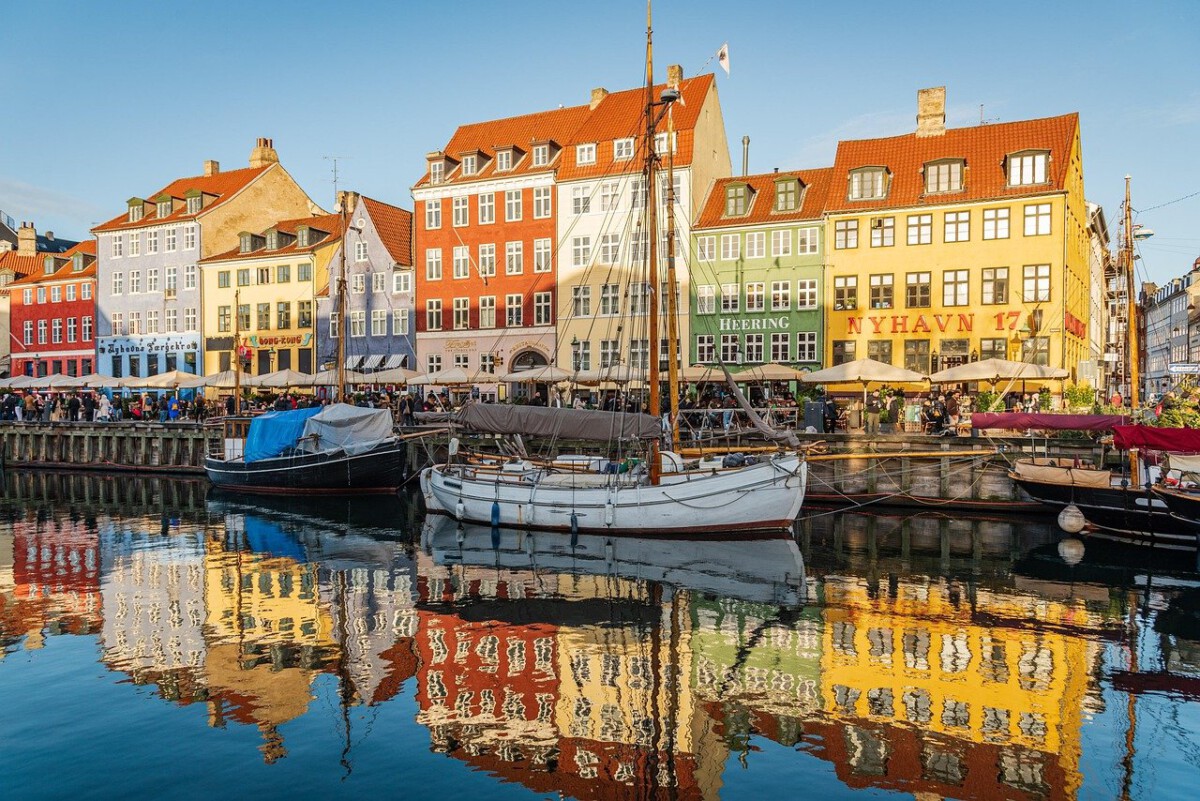Finland: The Cleanest Nation

Finland stands at the pinnacle of cleanliness worldwide, securing an impressive 86.5 on the 2024 Environmental Performance Index (EPI). The country’s waste management practices are astounding, with a 99% recycling rate for municipal waste, setting a near-unmatched global standard. Finnish cities are known for their spotless streets, and the government’s strict environmental regulations ensure that public spaces remain pristine year-round. Over 75% of Finland’s land is cloaked in forests, supporting biodiversity and absorbing pollutants, contributing to the country’s fresh air and unspoiled nature. Environmental education is rooted in the Finnish school system, instilling sustainable habits from an early age. Helsinki, the capital, regularly ranks among the world’s cleanest cities, thanks to innovative city planning and public engagement initiatives. The national commitment to cleanliness is so strong that even public saunas—an essential part of Finnish culture—are subject to rigorous hygiene standards.
Denmark: A Model of Sustainability

Denmark has consistently demonstrated its dedication to cleanliness and sustainability, earning an EPI score of 85.3 in 2024. The country’s remarkable use of renewable energy, with over 60% of electricity coming from wind turbines, significantly reduces air pollution and carbon emissions. Copenhagen’s urban design prioritizes cleanliness, featuring a vast cycling network and modern waste-to-energy plants that keep litter at bay. The Green Tax initiative, introduced by the Danish government, actively rewards citizens and businesses that adopt environmentally friendly practices. Drinking water quality is exceptional, with 98% sourced from protected groundwater reserves, ensuring purity and safety. Public participation in recycling and composting is high, and single-use plastics have been largely phased out from supermarkets and restaurants. Denmark’s approach to sustainable living has become a blueprint for cities worldwide striving for cleaner futures.
Switzerland: A Cleanliness Benchmark

Switzerland continues to set a global benchmark for cleanliness, achieving an EPI score of 84.7 in 2024. The country’s municipal waste recycling rate stands at a notable 54%, supported by a meticulously organized waste sorting and collection system. Swiss urban centers, such as Zurich and Geneva, are celebrated for their immaculate streets and public parks, maintained through rigorous municipal cleaning schedules. Approximately 30% of Switzerland’s land is protected, preserving lakes, forests, and mountains from pollution and overdevelopment. The Swiss are known for their civic pride, often participating in community clean-up days and environmental campaigns. Water quality is exceptionally high, with lakes and rivers routinely tested to prevent contamination. The combination of stringent legislation and public engagement ensures that Switzerland remains a bastion of cleanliness in Europe.
Sweden: A Leader in Clean Technology

Sweden’s reputation as a leader in clean technology is underscored by its 2024 EPI score of 83.9. The government’s ambitious goal to reach carbon neutrality by 2045 has spurred the rapid adoption of renewable energy and advanced waste management systems. Over 99% of Swedish waste is either recycled or converted into energy, drastically reducing landfill use and pollution. Stockholm features expansive green spaces, clean waterways, and some of the lowest urban air pollution levels in Europe. Swedish schools integrate environmental stewardship into the curriculum, encouraging lifelong sustainable habits among citizens. The nation’s public transportation system is heavily electrified, supporting low-emission commuting options. Innovation hubs across Sweden continue to develop cutting-edge solutions for pollution, waste, and resource management.
Norway: Clean Air and Water

Norway’s commitment to environmental purity is unwavering, reflected in its EPI score of 83.5 in 2024. The country’s strict emission regulations have resulted in some of the cleanest city air in Europe, with Oslo earning accolades for its air quality and green initiatives. Electric buses and ferries are commonplace, and the national fleet of electric vehicles is one of the largest per capita in the world. Norway protects vast swathes of its territory as national parks, which cover more than 17% of the country and keep ecosystems untouched. The country’s drinking water is consistently rated among the cleanest globally, with advanced purification systems in place even in remote communities. Coastal waters are rigorously monitored to preserve marine life and prevent pollution from fishing and shipping. Norway’s policies combine technological innovation with an ingrained respect for nature.
New Zealand: A Clean Green Image

New Zealand’s worldwide reputation as a “clean, green” nation is backed by its 2024 EPI score of 82.8. The country’s strict biosecurity laws are among the toughest globally, protecting native flora and fauna from invasive species. With a national goal to cut landfill waste by 30% before 2025, government campaigns have spurred widespread adoption of recycling and composting. Over 80% of New Zealand’s electricity is generated from renewable sources, further minimizing environmental impact. Tourist attractions such as Milford Sound and Abel Tasman National Park are meticulously maintained, with rangers and volunteers working year-round to keep them pristine. Public awareness campaigns, like “Tiaki Promise,” encourage both locals and visitors to act as guardians of the environment. Waterways are closely monitored for pollution, and community-led clean-up events are regular occurrences.
Canada: A Clean and Diverse Landscape

Canada stands out for its breathtaking, clean environments, boasting an EPI score of 81.2 in 2024. With 10% of its land mass protected as national parks, Canada preserves vast forests, lakes, and mountains from pollution and urban sprawl. Cities like Vancouver and Toronto are known for their clean streets, extensive recycling programs, and green public transport. The Canadian government’s pledge to lower greenhouse gas emissions by 40-45% from 2005 levels by 2030 signals a strong commitment to tackling pollution. Public health campaigns promote proper waste disposal and water conservation, and drinking water quality is strictly regulated. Canada’s multicultural population participates in annual clean-up events, fostering a collective sense of environmental stewardship. Urban green spaces, such as Montreal’s Mount Royal Park, are cherished and carefully maintained.
India: A Country to Avoid for Cleanliness

India remains one of the most challenging nations in terms of cleanliness, with a 2024 EPI score of 36.6. Major cities like Delhi frequently record hazardous air quality levels, with PM2.5 concentrations exceeding safe limits for much of the year. Only 30% of municipal waste is effectively processed, with the remainder often ending up in open dumps or rivers. The Swachh Bharat Mission, launched to improve sanitation, has made some progress but continues to face hurdles due to rapid urbanization and limited public awareness. According to the World Health Organization, air pollution contributes to over 1.2 million premature deaths annually in India. Water pollution is another grave concern, with many rivers contaminated by industrial runoff and untreated sewage. Despite ongoing efforts, the scale of India’s environmental challenges makes it a difficult destination for those seeking clean surroundings.
Bangladesh: Persistent Environmental Struggles

Bangladesh’s low EPI score of 36.0 in 2024 highlights the severity of its environmental challenges. Dhaka, the capital, is routinely ranked among the world’s most polluted cities, with air quality indices remaining in the unhealthy range, especially during winter months. Only 40% of urban waste is collected, leading to widespread littering and clogged drainage systems that exacerbate flooding. The country’s rapid industrialization has led to rivers such as the Buriganga becoming heavily polluted with chemicals and waste. Although the government has launched initiatives to improve sanitation, limited infrastructure hampers progress. The majority of rural areas still lack access to safe drinking water and proper waste disposal. Airborne diseases and respiratory issues are prevalent, underscoring the urgent need for effective environmental policies.
Nigeria: Environmental Challenges Intensified

Nigeria ranks even lower, with a 2024 EPI score of 30.2, reflecting deep-rooted cleanliness issues. In cities like Lagos, only about 20% of waste is collected, leading to massive illegal dumpsites and frequent outbreaks of diseases such as cholera. The World Bank estimates that over 90% of Nigerians are exposed to harmful air pollution, mainly from vehicle emissions, open burning, and industrial activities. Water resources are under constant threat from oil spills, particularly in the Niger Delta, where contamination of soil and water has devastated local communities. Government initiatives to address these challenges are often hindered by corruption and weak enforcement mechanisms. Urbanization is rapid, but infrastructure lags far behind, resulting in slums with little to no waste management. The environmental situation in Nigeria is so severe that international organizations regularly issue warnings about the health risks associated with pollution.





